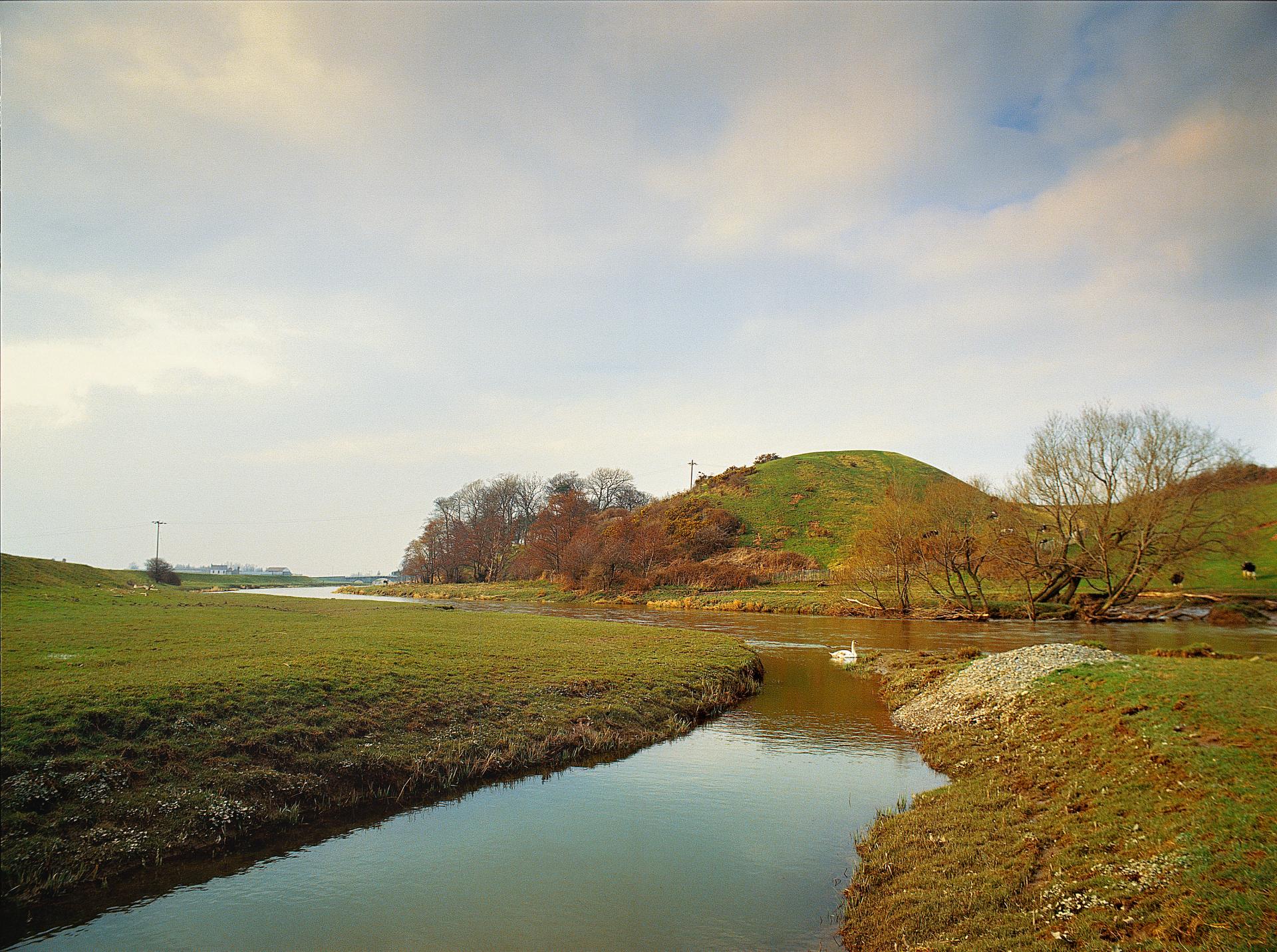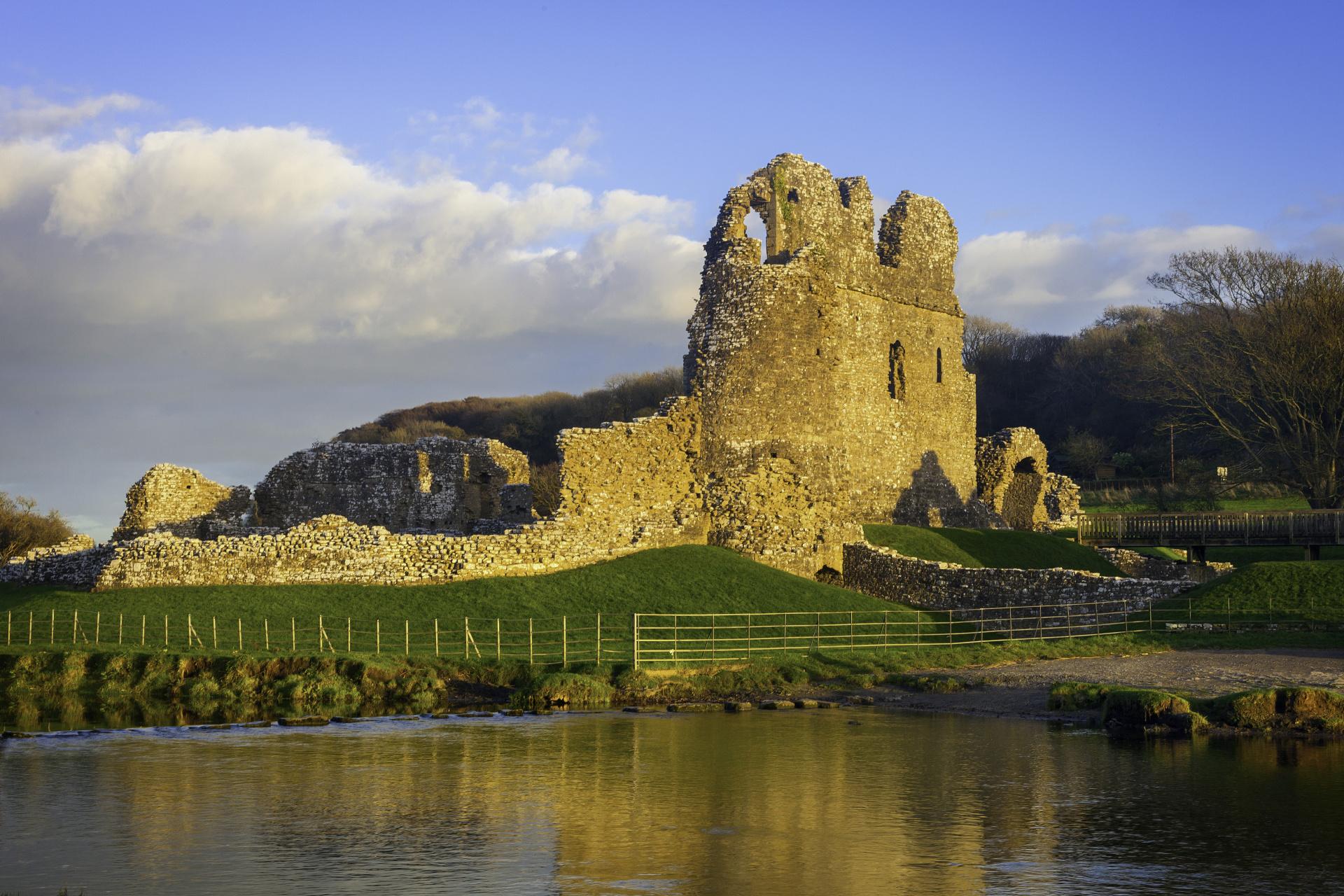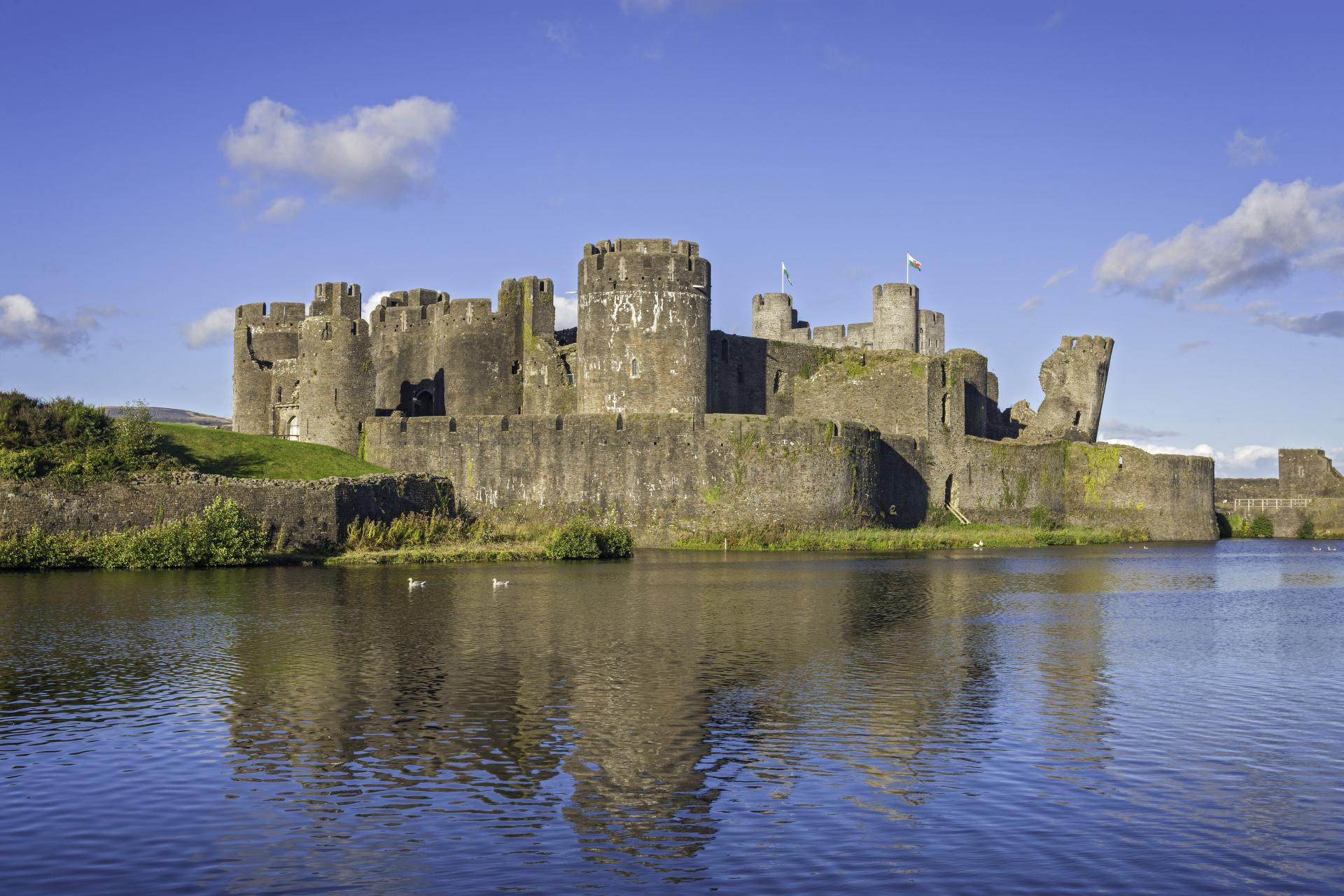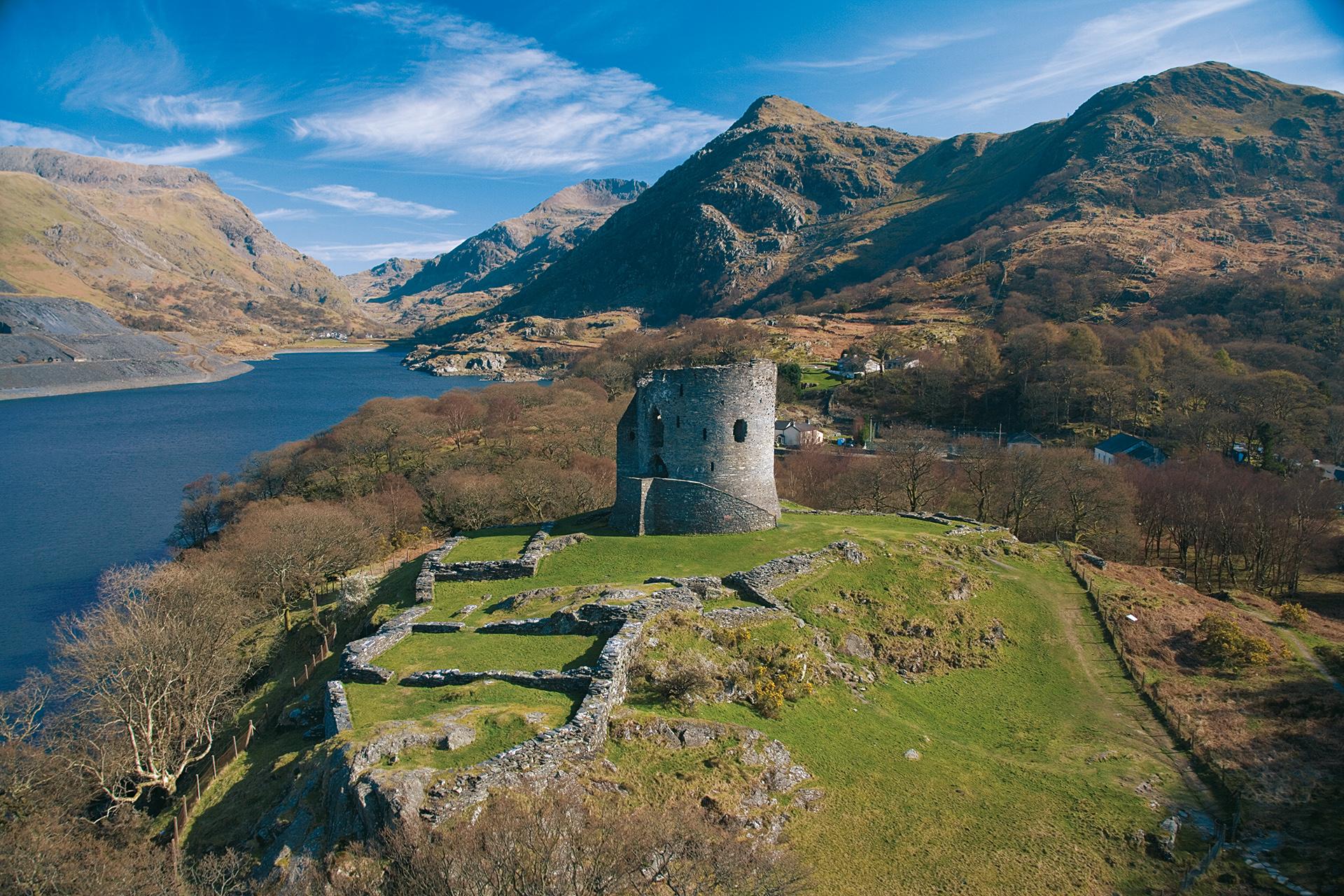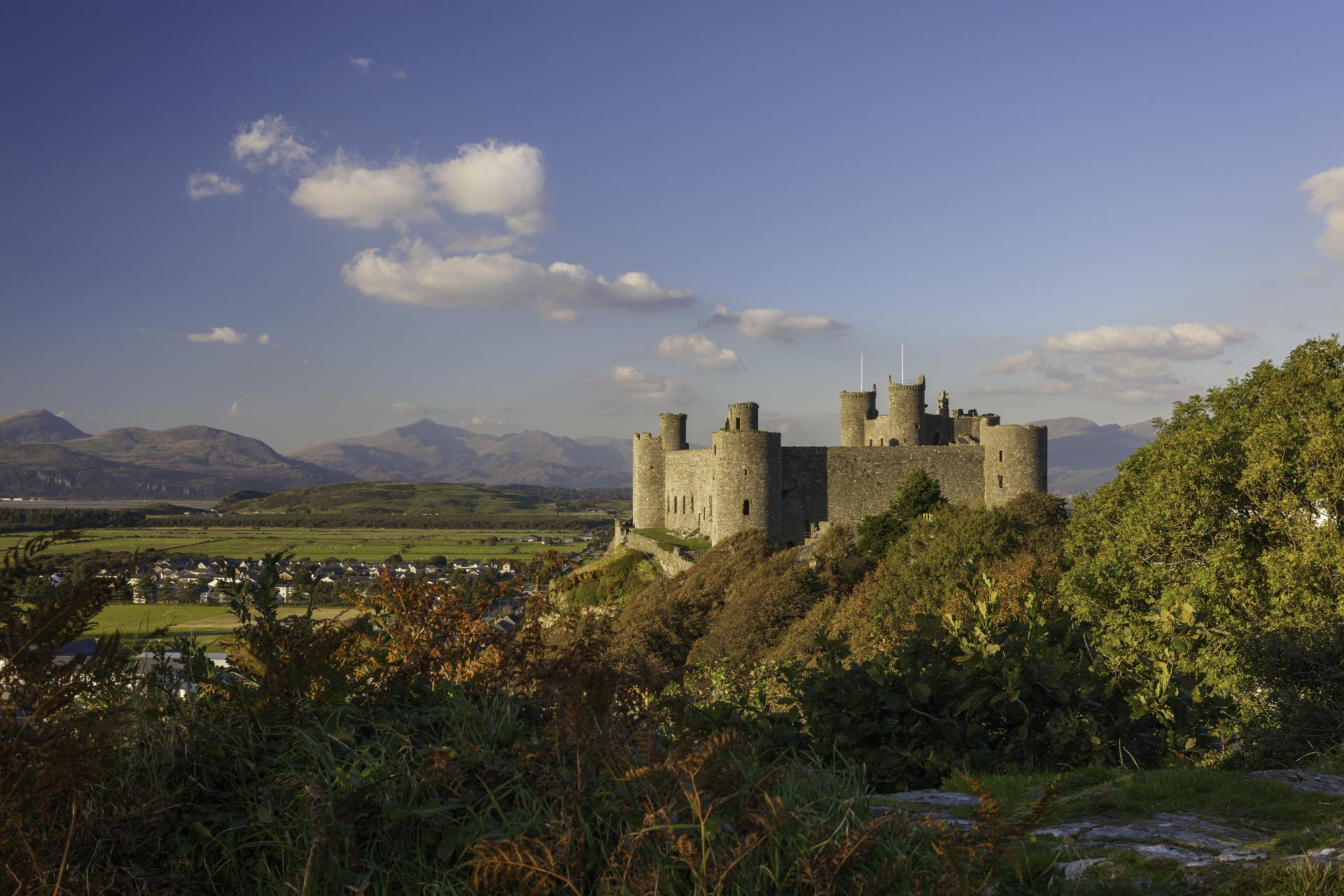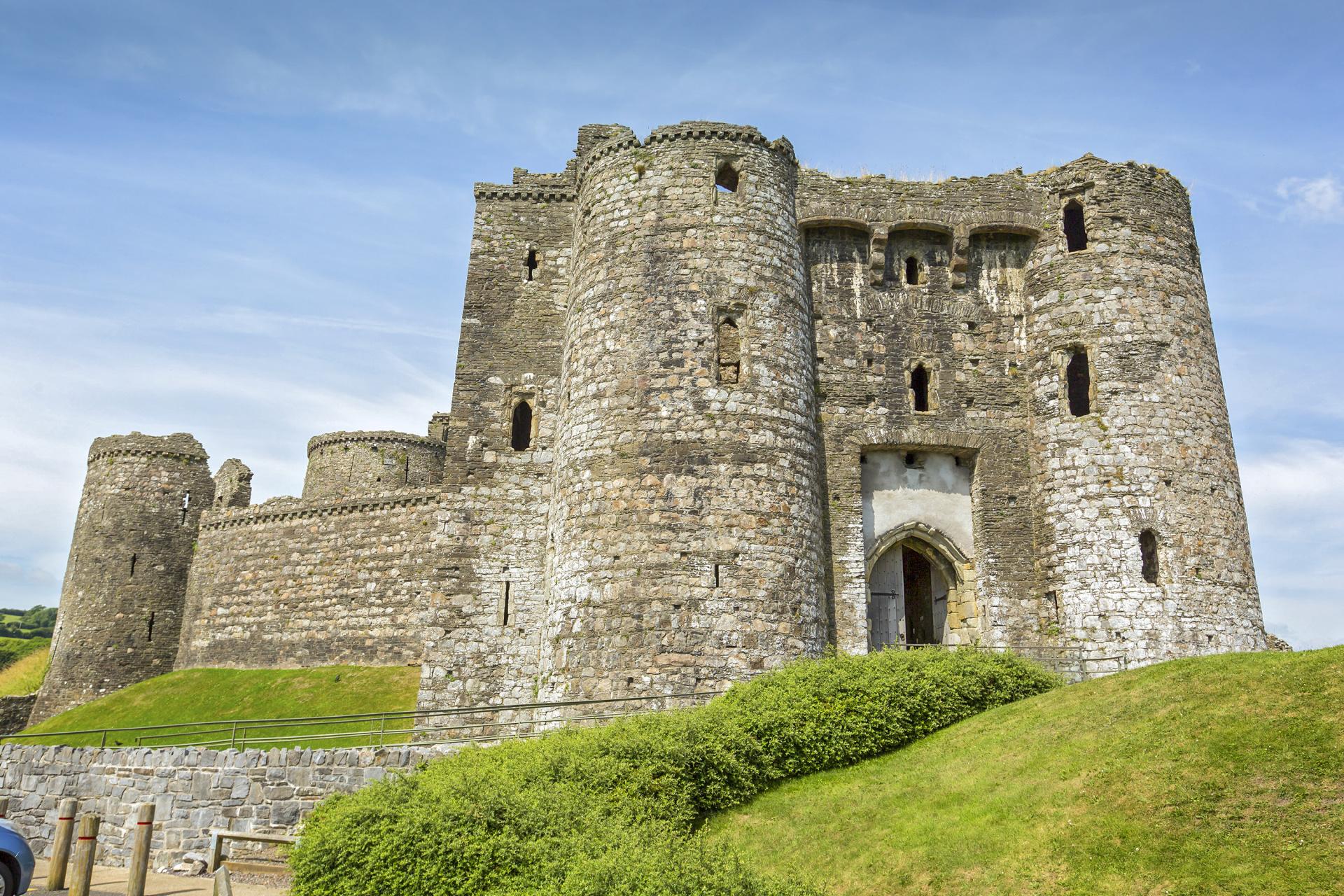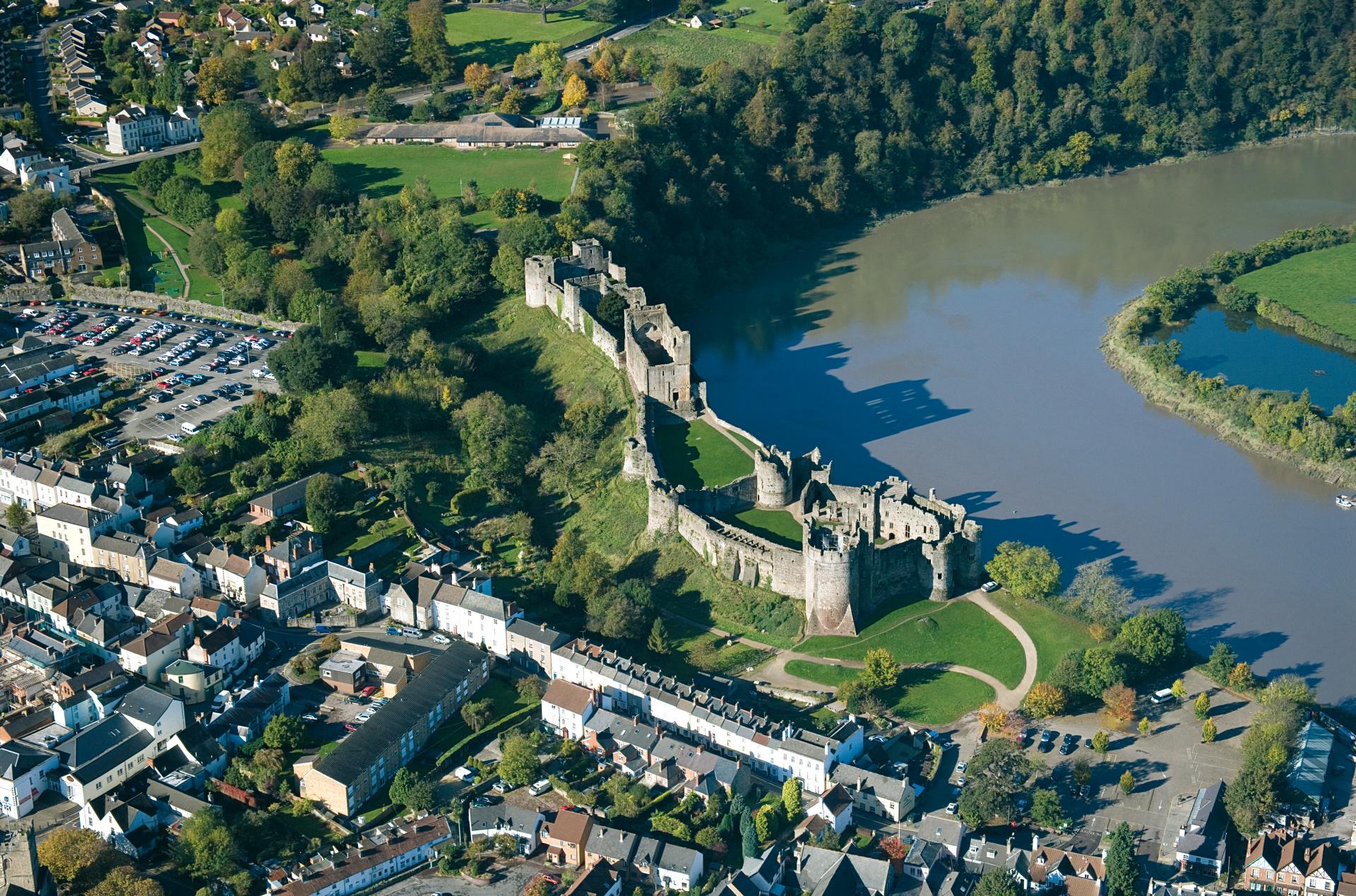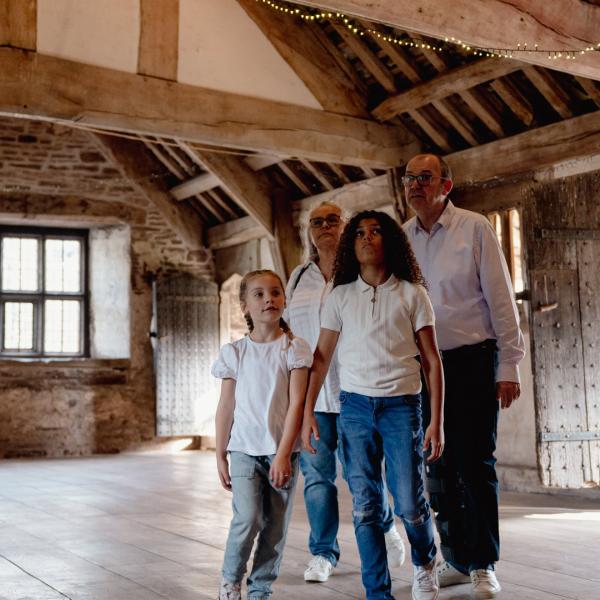Castles of Wales
Wales is often called 'the land of castles' – there are 427 of them!
If you visit Wales you’re almost certain to see one. If you live here you’re probably familiar with quite a few. Cadw looks after 44 castles — each one is unique.
Click on the links to learn how castle building in Wales developed over the years.
After the Battle of Hastings in 1066, William the Conqueror gave land to the noblemen who had supported him and made them lords. They built castles to protect their land and helped him rule Britain.
It was important to build the castles quickly. They built with materials to be found close at hand – timber and earth. Sites were chosen carefully and castles designed to give defenders the maximum advantage over attackers. They could be garrisoned by small forces of men yet, in time of need, could accommodate larger numbers of troops.
Two types of castle were built in Wales.
- A motte and bailey castle is made up of a huge mound of earth (called a motte). A wooden tower was often built on this. It gave a good view of the surrounding countryside. Next to it was a courtyard (called a bailey) surrounded by a ditch, a bank and a wooden palisade (strong fence). In this the horses, supplies and weapons were safe.
- The other type of earthwork castle is called a ringwork. This consisted of a bailey with a strong gate tower, but without a motte. This type of castle was often built in the borders between England and Wales and in south and west Wales.
Gradually, from the late eleventh and through the twelfth century, some earth and timber castles were rebuilt in stone, with
- a stone keep instead of the wooden tower on the motte.
- a stone curtain wall instead of the wooden palisade.
- a stone tower instead of the bailey gate.
However, some castles were built in stone from the beginning. Chepstow Castle (Monmouthshire) was the earliest stone castle in Wales. Chepstow originally consisted of a long rectangular tower, two storeys high, which included the owner’s hall and private rooms, and perhaps quarters for soldiers and storerooms in the basement. Entry was at first-floor level by an external wooden stair, which may have been removable in times of danger.
Many other stone keeps were built throughout the south and east of Wales in the early twelfth century: Ogmore Castle, near Bridgend, is a fine example.
Sometimes the timber palisade around a motte was rebuilt in stone, and this is called a shell keep. Two examples of shell keeps in Wales are Cardiff Castle (owned by Cardiff City Council and open to the public) and Tretower Castle, Powys (Cadw). From about 1200 onwards, round keeps were built, because it was easy for attacking armies to damage rectangular keeps by undermining them at the corners (knocking out the corner stones and setting a fire underneath to make a hole for the soldiers to enter). Round keeps built between 1200 and 1240 can be seen at Pembroke Castle, Pembrokeshire (private castle open to the public), Castell Bronllys, Powys, and Skenfrith Castle, Gwent.
A stone keep was not only a stronghold but also a residence, with accommodation for the lord and his household. In the keep the furnishings would probably have been sparse. The hall, for example, may have contained a table, benches and chairs for the lord’s family. Stone seats were often built into the walls or windows. The floor would have been covered with rushes. The inside walls were usually plastered and painted, and it is still sometimes possible to see traces of paint that once decorated the walls.
New ways to make castle defences stronger were found.
The stone-built curtain walls round the bailey became thicker, stronger and higher.
Towers were added to the curtain wall. These projected (stuck out) from the wall so soldiers had a better view of the surrounding area and could fire their bows more accurately.
To protect the entrance (often the weakest point of the castle) the gatehouse was built. At first it was a tower with a simple archway in the curtain wall. Later on twin towers, usually D-shaped, were built on each side of the entrance. They usually projected forward to guard the gate and had arrowloops.
Sometimes these towers were made deeper so that there was a passageway through the gatehouse. In this would be gates, portcullises and murder holes.
The way into the castle was usually by a bridge or drawbridge across the ditch or the moat. This was a dangerous position for attackers who could be shot from the gatehouse.
Concentric castles
The concentric castle had more than one line of defence: an outer wall with additional towers surrounded the inner stronghold. The inner wall was higher, to allow archers to shoot arrows over the heads of soldiers stationed on the outer wall. Sometimes, moats were added to make the castle even stronger.
Caerphilly Castle was one of the first planned concentric castles. It was built by Gilbert de Clare III, a powerful Anglo-Norman lord, and begun in 1268.
The Welsh princes built castles of their own to defend their land from invasion and to protect important routeways. The earliest castles built by Welsh princes were like those of the Norman invaders in design, and were also of earth and timber. But in the thirteenth century the Welsh princes began to build their castles in stone and the design was very different.
The castles were generally built on sites with strong natural defences (for example, on a hill-top site or next to a river). The shape of the castle varies, to take advantage of its position. The towers formed the main strong points in the castle, with a curtain wall linking them, and they were usually two storeys high. The towers were often D-shaped.
Llywelyn ab Iorwerth (Llywelyn the Great, died 1240) built both Castell Dolwyddelan and Castell Dolbardarn in the early thirteenth century. Dolwyddelan had a rectangular keep but the later castle at Dolbardarn was designed with a round keep.
Llywelyn ab Iorwerth also built Criccieth Castle (Gwynedd) about 1230, with an inner ward and a twin-towered gatehouse, and Castell Ewloe (Flintshire), with an inner ward and a strong D-shaped keep.
In 1276–77 and 1282–83, King Edward I led two military campaigns in Wales to defeat the Welsh princes and bring Wales under English rule. To do this, between 1276 and 1295 many castles were built or repaired.
Castles built or rebuilt by Edward I: Aberystwyth, Beaumaris, Builth, Caernarfon, Conwy, Flint, Harlech, Rhuddlan
Welsh castles captured and repaired by Edward I: Castell y Bere, Criccieth, Dolwyddelan and Caergwrle
Castles built or rebuilt by lords on their own land for Edward I: Chirk, Denbigh, Hawarden, Holt, Ruthin
After each campaign, castles were built to maintain hold of the land that was captured and rule the defeated enemies. Eryri (Snowdonia), a mountainous area, was the heartland of the Welsh, and King Edward surrounded it with a ring of castles. Most of these were on the coast or by a river so that supplies could be brought by ship. The latest ideas in castle-building were used, and the new castles had
- concentric defences.
- massive curtain walls and towers.
- multiple arrowloops.
- powerful gatehouses.
The cost of all this building was about £30m in today's money. New walled towns were built alongside the castles at Caernarfon, Conwy, Denbigh and Flint.
The castles built at this time are some of the most famous in Wales. Four of the most complete – Beaumaris, Caernarfon, Conwy, and Harlech – are today designated a World Heritage Site.
Building began in June 1283. The castle has nine towers and two gatehouses. It had accommodation for the king’s household and family, and acted as the administrative centre for the area.
Building began in 1283 during the second campaign. In the summer of 1286, the busiest time during the building of the castle, nearly 950 men were employed – 227 masons, 115 quarriers, 30 smiths, 22 carpenters and 546 labourers. The stone came from quarries in Anglesey, Caernarfon, Egryn and from the site itself.
Castell Conwy took four and a half years to complete and cost about £15,000 (over £6m today). Its eight impressive towers dominate the area and overlook the river Conwy, which was used for moving troops and supplies by ship. The town of Conwy has the most complete set of town walls in Wales.
This was the last of Edward I’s castles to be built in north Wales. Begun in 1295, it is a concentric castle with a water-filled moat as an extra line of defence. Sea-going ships could sail right up to the castle gate.
After the conquest of Wales by Edward I, the military need for castles lessened. When gunpowder and cannon were invented, castle defences could be damaged or destroyed more easily. Battles between armies were fought away from castles on open ground.
During the campaigns of Owain Glyndŵr against the king, castles came back into use for a while. In 1404 Owain Glyndŵr captured Castell Harlech and it became his headquarters for five years and a setting for his parliament.
When Wales and England became one country after the Acts of Union (1536-43), the country became more peaceful and castles were not needed for defence. Some were used as centres of administration, where rents and taxes could be collected. Courts of law were held at some castles, and their dungeons were still used as prisons. If castles were used in this way, the rooms were adapted to provide offices and accommodation for the officials who carried out these duties. Other castles fell into ruins. Kidwelly Castle was used as a court until 1609.
Some owners improved and rebuilt their castles to create more comfortable accommodation. At Raglan Castle, William Somerset (1549-89), the third earl of Worcester, carried out improvements to provide grand accommodation suitable for a gentleman of his status. He rebuilt the Great Hall and the Office Wing (with accommodation for staff) and added the Long Gallery (where pictures would be displayed and the family and guests could take exercise). He also built beautiful gardens.
Chirk Castle, Wrexham, and Powis Castle, Powys, (both owned by the National Trust and open to the public) are castles that were changed into grand houses by their owners.
However, military uses for castles in Wales were not completely over. When the Civil War broke out between the King and Parliament in 1642, a number of Welsh castles were refortified to become bases for troops supporting King Charles I. New weapons – guns and cannons – were now in use, and walls were strengthened to withstand gunfire. Platforms were built outside the walls to mount cannons.
The Parliamentarian army besieged the castles at Conwy, Caernarfon and Harlech. Fighting was even harder in south-east Wales, where the earl of Worcester defended Raglan Castle and his son Edward held Chepstow Castle for the King.
During the summer of 1646 a Parliamentarian army of 3,500 men led by Sir Thomas Fairfax besieged Raglan Castle and, when they finally took the castle, it was a serious defeat for the King. The castle was deliberately damaged to prevent the Royalists using it again.
From the end of the eighteenth century, many people became interested in medieval architecture. Some wealthy people remodelled their houses to look like castles, or even built new ones. These castles showed that the owners were rich and wealthy, but were not built to defend them or their land.
Castell Coch is near Cardiff and is cared for by Cadw. It was built between 1860 and 1880 for the marquess of Bute, who made a fortune from Cardiff docks. He owned the ruins of a medieval castle and employed the architect William Burges to rebuild it. William Burges was an expert on medieval design and as well as the castle itself, he designed the furniture and decoration down to the last detail.
Penrhyn Castle, near Bangor, Gwynedd, belongs to the National Trust and is open to the public. It was built about 1820 for the Pennant family who made a fortune from supplying slate for roofing houses.
